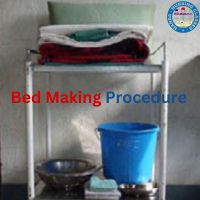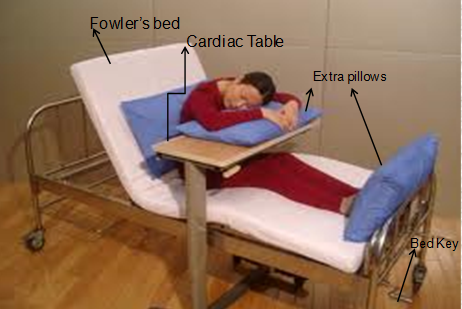Introduction Blood Transfusion
The administration of blood or blood components to replenish the circulating blood volume or to treat a specific condition is known as a blood transfusion. Blood transfusions are of two types: whole blood or packed red blood cells (PRBCs). Blood transfusion is generally the process of receiving blood products into one’s circulation intravenously. Blood transfusion is used for various medical conditions to replace lost components of the blood. Yearly transfusion uses whole blood, but modern medical practice commonly uses only components of the blood, such as red blood cells, white blood cells, plasma, clotting factors & platelets.

BLOOD TRANSFUSION DEFINITION
Blood transfusion is the intravenous administration of the whole blood or a component such as plasma, packed red blood cells, or platelets to a patient to treat any clinical condition.
BLOOD TRANSFUSION PURPOSES
- To increase circulating blood volume.
- To increase the number of red blood cells & to maintain the hemoglobin level.
- To provide plasma clotting factors to help in controlling bleeding.
- To combat infection due to decreased or defective white cells or antibodies.
- To correct anemia.
- Some blood transfusions are classified as emergency procedures and are usually performed in an operating room setting. In a hospital setting, blood transfusions are also performed in the blood bank where donors can donate blood.
INDICATION OF BLOOD TRANSFUSION
The indications for transfusion are classified into two broad groups: therapeutic and prophylactic.
Therapeutic Indications
Therapeutic indications for transfusion are:
- Acute blood loss: When 30–40% of the estimated blood volume is lost, transfusion is indicated. In cases of traumatic injury, transfusion is given to maintain hemoglobin concentration above 10 g/dL.
- Anemia: In the case of severe anemia, transfusion may be indicated.
- Thrombocytopenia: If the platelet count is less than 20,000/mm3, transfusion is indicated.
- Surgery: Major surgery, especially surgery on the heart and great vessels, is often associated with blood loss. Transfusion is indicated in the case of massive postoperative blood loss.
- Hemodynamic instability: Transfusion is indicated when a patient is unstable, unresponsive, and in shock.
- Leukemia: The patient may require transfusion because of anemia and thrombocytopenia.
- Severe trauma: Transfusion is indicated in cases of severe trauma, especially when injury to the brain, lungs, or other vital organs occurs.
- Severe burns: Transfusion is indicated in cases of severe burns.
- Exsanguination: Transfusion is indicated if the patient is exsanguinating.
- Hemolytic disease of the newborn: Transfusion is indicated when the patient has this disease.
- Hemophilia: Transfusion is indicated when the patient has this disease.
- Sickle cell disease: Transfusion is indicated when the patient has this disease.
- Stokes–Adams syndrome: Transfusion is indicated when the patient has this disease.
- Thalassemia: Transfusion is indicated when the patient has this disease.
Prophylactic Indications
Prophylactic indications for transfusion are:
- Surgery: Surgery that involves the spine, brain, or other vital organs may require transfusion.
- Trauma: Trauma may require transfusion.
- Burns: Burns may require transfusion.
BLOOD TRANSFUSION ARTICLES
- BT set
- IV injection tray,
- IV catheter/ needle G 19/19,
- Tourniquet,
- Blood, blood components to be transfused,
- Plain NSS 500cc,
- IV set,
- needle gauge 18 (only if needed),
- IV hook,
- Gloves,
- Sterile 2×2 gauze or transplant dressing,
PREPARATION OF PATIENT FOR BLOOD TRANSFUSION
- Explain the procedure to the client
- Carry out an essential laboratory investigation
- Make sure the client has an empty bladder
- Monitor vital signs
- Match the blood bag
- Maintain the suitable temperature of blood
- Prepare an emergency tray to manage any adverse reaction
- Take informed written consent
- Provide comfortable position
- Ask the client to report any chills, rigors, itching, or rash
BLOOD TRANSFUSION PROCEDURE
- Verify the physician’s written order and make a treatment card according to hospital policy
Observe the 10 Rs when preparing and administering any blood or blood components - Explain the procedure/rationale for giving blood transfusion to reassure patient and significant others and secure consent. Get patient histories regarding previous transfusions?
- Explain the importance of the benefits of Voluntary Blood Donation (RA 7719- National Blood Service Act of 1994).
- Request prescribed blood/blood components from blood bank to include blood typing and cross-matching and blood result of transmissible Disease.
- Using a clean-lined tray, get compatible blood from hospital blood bank.
- Wrap blood bag with clean towel and keep it at room temperature.
- Have a doctor and a nurse assess patient’s condition. Countercheck the compatible blood to be transfused against the cross-matching sheet noting the ABO grouping and RH, serial number of each blood unit, and expiry date with the blood bag label and other laboratory blood exams as required before transfusion.
- Get the baseline vital signs- BP, RR, and Temperature before transfusion. Refer to MD accordingly.
- Give pre-meds 30 minutes before transfusion as prescribed.
- Do hand hygiene before and after the procedure
- Open compatible blood set aseptically and close the roller clamp. Spike blood bag carefully; fill the drip chamber at least half full; prime tubing and remove air bubbles (if any). Use needle g.18 or 19 for side drip (for adults) or g.22 for pedia (if blood is given to the Y-injection port, the gauge of the needle is
disregarded). - The Y-injection port of IV tubing (Plain NSS) and inserts the needle, from BT administration ser and secure with adhesive tape.
- The roller clamps of IV fluid of Plain NSS and regulate to KVO while transfusion is going on.
- Transfuse the blood via the injection port and regulate at 10-15gtts/min initially for the first 15 minutes of transfusion and refer immediately to the MD for any adverse reaction.
Observe/Assess patient on an on-going basis for any untoward signs and symptoms such as flushed skin, chills, elevated temperature, itchiness, urticaria, and dyspnea.If any of these symptoms occur, stop the transfusion, open the IV line with Plain NSS and regulate accordingly, and report to the doctor immediately. - Swirl the bag gently from time to time to mix the solid with the plasma N.B one B.T set should be used for 1-2 units of blood.
- When blood is consumed, close the roller clamp, of BT, and disconnect from IV lines then regulate the IVF of plain NSS as prescribed.
- To observe and monitor patient post-transfusion, for delayed reaction could still occur.
Re-check Hgb and Hct, bleeding time, and serial platelet count within specified hours as prescribed and/or per institution’s policy. - Discard blood bag and BT set and sharps according to Health Care Waste Management (DOH/DENR).
- Fill-out adverse reaction sheet as per institutional policy.
Remind the doctor about the administration of Calcium Gluconate if patient has several units of blood transfusion (3-5 more units of blood).
BLOOD TRANSFUSION COMPLICATIONS
- Acute hemolytic transfusion reaction (AHTR)
- Delayed hemolytic transfusion reaction.
- Febrile non-hemolytic transfusion reaction.
- Allergic reactions.
- Volume overload.
- Acute lung injury.
- Altered oxygen affinity.
- Graft-vs-host disease (GVHD)
BLOOD TRANSFUSION PROCEDURE NURSING RESPONSIBILITIES
- Do not administer medication through the same line, where blood product is
transfused. Start another IV line if medications are to be infused, because of
possible incompatibility & bacterial contamination. Blood transfusion
should be completed over a period of 4 hours from the time of initiation. - Cover the blood bag with a towel when it hangs on the IV pole.
- Gently rotate the blood bag periodically to prevent clumping of cells.
- When rewarming the blood by immersing in tap water, do not immerse the blood bag
fully into the water as it may cause hemolysis. - Rewarming of blood may be done by covering the blood bag with a blanket.
- Pre-medications such as “Avil” may be prescribed.
Conclusion
Blood transfusion is a vital medical procedure that saves millions of lives every year. Whether it’s used to replace blood lost during surgery, treat medical conditions like anemia, or support patients with chronic illnesses, the availability of donated blood is essential for modern healthcare. Through the generous donations of blood donors and the expertise of healthcare professionals, patients around the world receive the life-saving transfusions they need to recover and thrive.
FAQs on Blood Transfusion
What is a blood transfusion?
A blood transfusion is a medical procedure in which blood or blood components are transferred from one person (the donor) into the bloodstream of another person (the recipient).
Why are blood transfusions necessary?
Blood transfusions are necessary to replace blood lost during surgery or injury, treat medical conditions such as anemia, hemophilia, or cancer, and support patients with chronic illnesses or blood disorders.
How is blood matched between donor and recipient?
Blood is matched based on blood type (A, B, AB, or O) and Rh factor (positive or negative). Compatibility testing ensures that the donor blood is safe for the recipient and will not cause an adverse reaction.
Are there risks associated with blood transfusions?
While blood transfusions are generally safe, there are risks of complications such as allergic reactions, transfusion-related acute lung injury (TRALI), transfusion-associated circulatory overload (TACO), and infections transmitted through donated blood.
Can I donate blood?
Most healthy adults who meet eligibility criteria set by blood donation organizations can donate blood. These criteria typically include age, weight, overall health, and lifestyle factors.
How often can I donate blood?
Donation frequency varies depending on local regulations and individual health status. In general, whole blood donors can donate every 8 to 12 weeks, while donors of specific blood components (such as platelets or plasma) may have shorter intervals between donations.
Is donated blood always used for transfusions?
Donated blood may be used for transfusions, but it can also be processed into various blood products, including red blood cells, platelets, plasma, and cryoprecipitate, which are used to treat specific medical conditions or support patients undergoing treatment.
Can I refuse a blood transfusion?
In some cases, patients may refuse blood transfusions for religious, personal, or medical reasons. Healthcare providers will work with patients to explore alternative treatments and ensure their wishes are respected while prioritizing their health and safety.
How can I support blood donation efforts?
You can support blood donation efforts by donating blood if you’re eligible, organizing blood drives, spreading awareness about the importance of blood donation, and encouraging others to become regular blood donors.
Where can I learn more about blood donation and transfusion?
You can learn more about blood donation and transfusion by contacting your local blood donation center, visiting their website, or consulting healthcare professionals who specialize in transfusion medicine.
If you have any queries Feel free to ask any Queries in the comment section 👇and share with your pear groups



